Elgin, IL Pollen and Allergy Report for Summer 2023
Pollen Allergy Trends in Elgin, IL
When is pollen lowest in Elgin, IL?

March
Lowest month total PPM
Avg. PPM
When is pollen highest in Elgin, IL?

May
Highest month total PPM
Avg. PPM
How does pollen in Elgin, IL compare to Illinois?
Elgin has a higher average PPM than the state of Illinois.
Elgin yearly avg PPM:
Illinois yearly avg PPM:
How does pollen in Elgin, IL compare to the USA?
Elgin has a higher average PPM than the USA.
Elgin yearly avg PPM:
USA yearly avg PPM:
Is pollen worse this year in Elgin, IL?
Spring 2023 was worse than spring 2022.
Spring 2023 PPM:
Spring 2022 PPM:
Average PPM in Elgin, IL
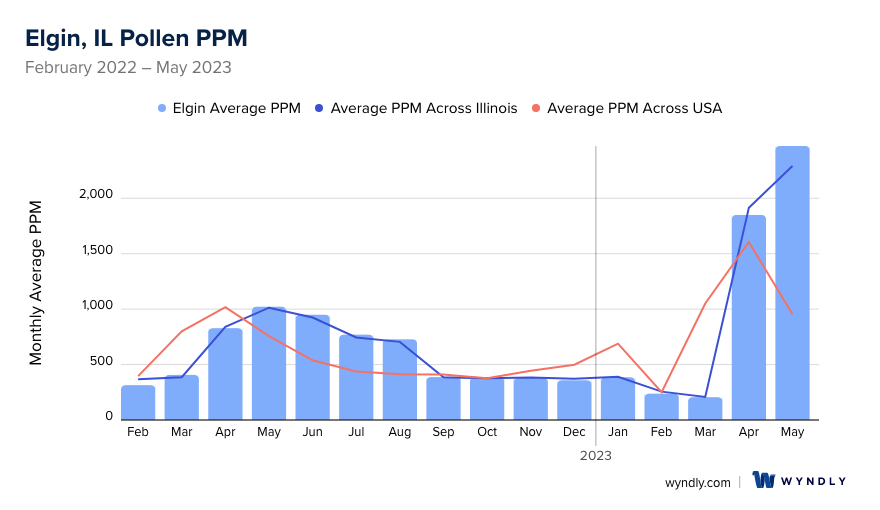
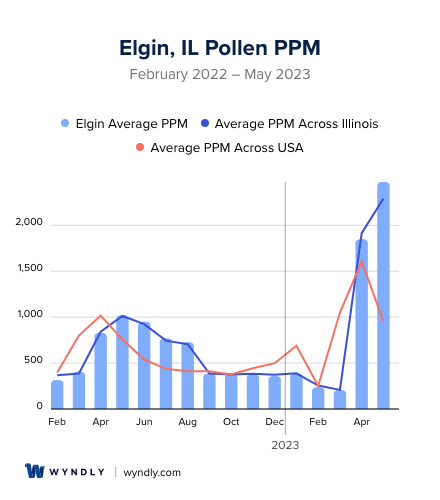
Elgin, IL Pollen and Allergy Breakdown by Month
Grass
When is grass pollen highest in Elgin, IL?
July has the highest grass pollen in Elgin, IL with an average PPM of
When is grass pollen lowest in Elgin, IL?
October has the lowest grass pollen in Elgin, IL with an average PPM of
Tree
When is tree pollen highest in Elgin, IL?
May has the highest tree pollen in Elgin, IL with an average PPM of
When is tree pollen lowest in Elgin, IL?
October has the lowest tree pollen in Elgin, IL with an average PPM of
Weed
When is weed pollen highest in Elgin, IL?
April has the highest weed pollen in Elgin, IL with an average PPM of
When is weed pollen lowest in Elgin, IL?
February has the lowest weed pollen in Elgin, IL with an average PPM of
Elgin, IL Pollen Monthly Breakdown by Pollen Type
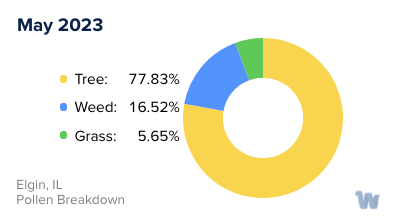
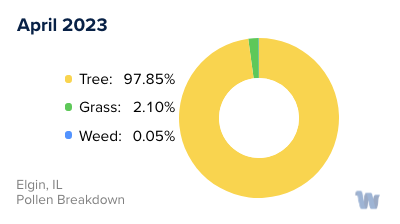
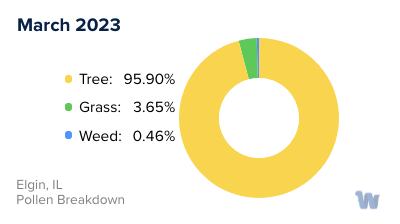
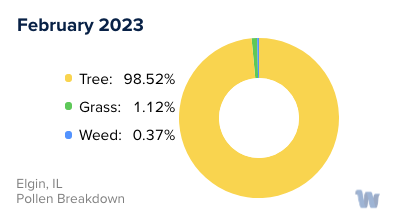
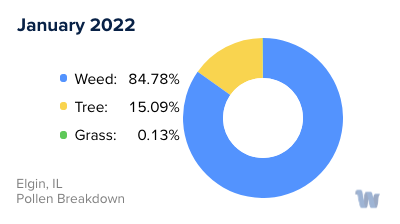
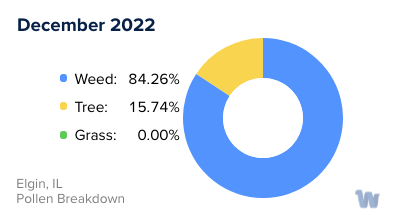
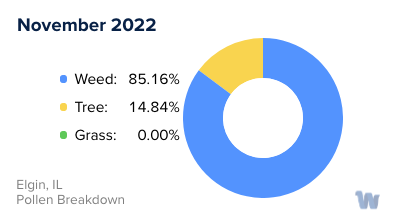
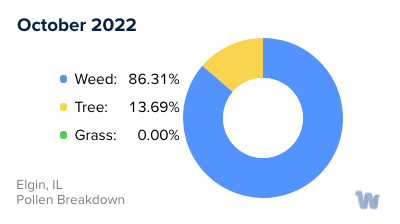
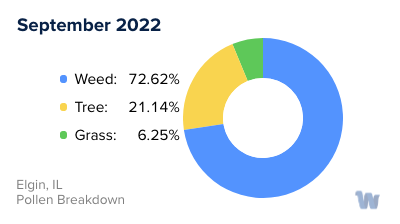
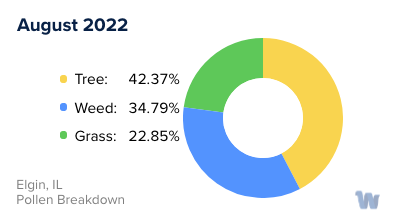
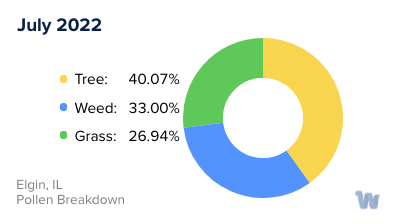
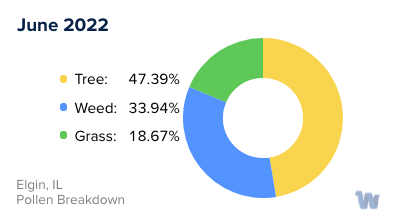
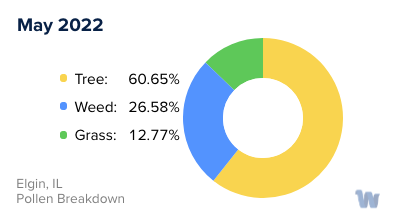
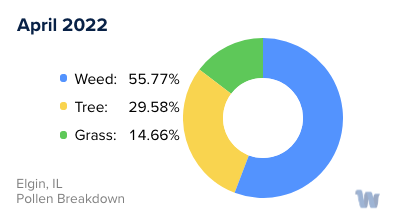
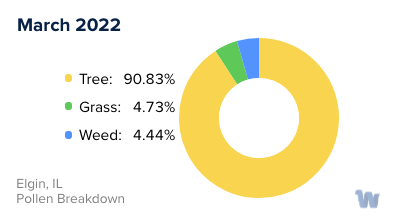
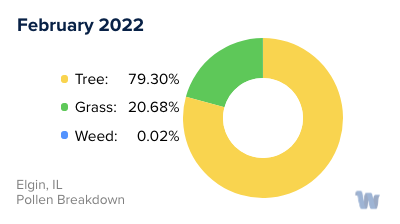
Pollen and Hay Fever in Elgin, IL
When spring and summer arrive in Elgin, Illinois, the beautiful change in seasons also brings an unwanted visitor: pollen. Pollen allergies, often referred to as hay fever, affect many of the city's residents. The discomfort, unfortunately, is a consequence of living in a region with a diverse range of flora that produces high amounts of pollen.
In Elgin, the types of pollen that most commonly trigger allergies are tree, grass, and weed pollen. These pollens are microscopic particles that plants produce for reproduction, but when they find their way into human noses and throats, they can cause hay fever.
Tree pollen is typically the first to appear in the year, often as early as late winter or early spring. Among the key culprits are oak, maple, pine, and birch trees. These trees generously distribute their pollen into the air, leading to an increase in allergy symptoms for many Elgin residents.
As spring turns into summer, grass pollen takes center stage. The usual suspects include Timothy grass, Kentucky bluegrass, and ryegrass. These grasses are prevalent in the area, and their pollen can be a significant issue from late spring to early summer.
As summer wanes and autumn approaches, the weed pollen season begins. In Elgin, ragweed is the primary offender. It releases pollen from late summer to fall, often until the first frost. Other weeds, like sagebrush and pigweed, can also contribute to the pollen count.
The timing and severity of pollen allergies can vary from year to year. They are influenced by factors such as weather conditions, temperature, and rainfall patterns. In general, dry, windy days are more likely to have higher pollen counts compared to wet, rainy days.
In conclusion, pollen allergies in Elgin, Illinois, are a seasonal but significant issue. The diverse range of tree, grass, and weed species in the area contribute to different allergy seasons throughout the year. Understanding these patterns can help individuals anticipate and prepare for the challenges of hay fever season, even though it can't be completely avoided.

